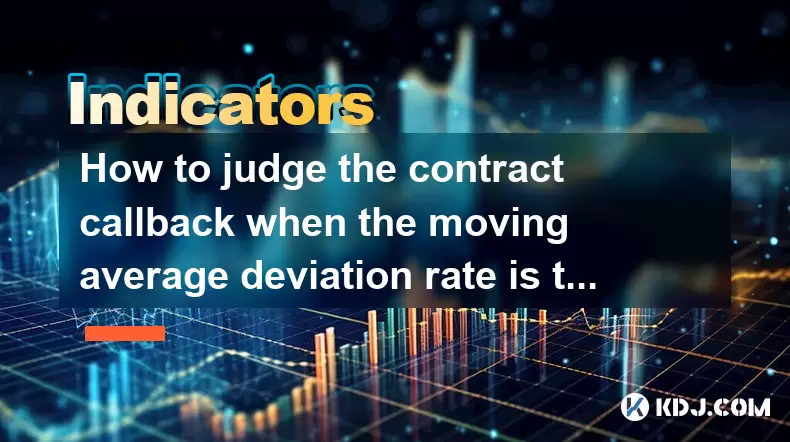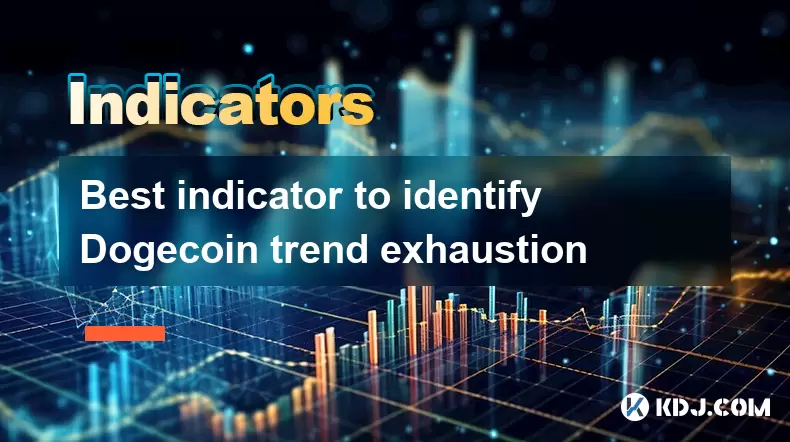-
 Bitcoin
Bitcoin $108,778.4882
0.68% -
 Ethereum
Ethereum $2,563.3783
2.01% -
 Tether USDt
Tether USDt $1.0001
-0.01% -
 XRP
XRP $2.2881
0.77% -
 BNB
BNB $662.2819
1.12% -
 Solana
Solana $152.2652
3.21% -
 USDC
USDC $0.9999
-0.01% -
 TRON
TRON $0.2873
0.90% -
 Dogecoin
Dogecoin $0.1715
4.20% -
 Cardano
Cardano $0.5868
1.50% -
 Hyperliquid
Hyperliquid $39.6796
1.73% -
 Sui
Sui $2.9136
0.85% -
 Bitcoin Cash
Bitcoin Cash $495.4980
1.77% -
 Chainlink
Chainlink $13.5765
3.06% -
 UNUS SED LEO
UNUS SED LEO $9.0753
0.53% -
 Stellar
Stellar $0.2503
3.73% -
 Avalanche
Avalanche $18.2012
1.86% -
 Shiba Inu
Shiba Inu $0.0...01174
1.83% -
 Toncoin
Toncoin $2.7998
-6.08% -
 Hedera
Hedera $0.1596
3.89% -
 Litecoin
Litecoin $87.3119
0.20% -
 Monero
Monero $319.5596
1.08% -
 Polkadot
Polkadot $3.3887
0.93% -
 Dai
Dai $0.9999
-0.01% -
 Ethena USDe
Ethena USDe $1.0001
-0.01% -
 Bitget Token
Bitget Token $4.3294
-1.36% -
 Uniswap
Uniswap $7.3898
1.60% -
 Aave
Aave $287.5336
5.76% -
 Pepe
Pepe $0.0...01005
3.24% -
 Pi
Pi $0.4588
1.90%
How to judge the contract callback when the moving average deviation rate is too large?
The moving average deviation rate helps traders identify overbought or oversold crypto conditions, signaling potential reversals when combined with RSI, Bollinger Bands, and candlestick patterns.
Jun 30, 2025 at 08:42 pm

Understanding the Moving Average Deviation Rate in Cryptocurrency Trading
In cryptocurrency trading, moving average deviation rate is a critical metric used to assess how far an asset's price has strayed from its moving average. This deviation can signal overbought or oversold conditions, which are essential for identifying potential reversals or continuation patterns in contract trading.
The formula for calculating the deviation rate is:
Deviation Rate = (Current Price - Moving Average) / Moving Average 100%*
This percentage helps traders understand whether the price is stretched too far from the average, potentially indicating an imminent pullback or bounce.
Identifying Extreme Deviations Using Technical Indicators
To judge when the moving average deviation rate becomes excessive, traders often combine it with other technical tools such as Bollinger Bands, Relative Strength Index (RSI), and Moving Average Convergence Divergence (MACD).
- Bollinger Bands show volatility by plotting two standard deviations away from a simple moving average. When the price touches or exceeds the upper or lower bands, it suggests that the deviation rate might be reaching extreme levels.
- RSI values above 70 or below 30 indicate overbought or oversold conditions, respectively. These thresholds can confirm if a high deviation rate corresponds to an overextended move.
- MACD crossovers and divergences can help determine whether the momentum behind the deviation is weakening or strengthening.
By cross-referencing these indicators with the moving average deviation rate, traders gain a more robust framework for assessing market conditions.
Recognizing Contract Callback Signals in High Deviation Scenarios
When the moving average deviation rate is too large, especially on higher timeframes like the 4-hour or daily charts, it may suggest an upcoming contract callback — a retracement toward the mean value.
Here’s how to interpret this situation:
- If the price is significantly above the 20-day exponential moving average (EMA), and the RSI is above 75, the asset might be overbought, signaling a possible downward correction.
- Conversely, if the price is far below the EMA and RSI is under 25, the market could be oversold, suggesting an upward rebound.
- Volume analysis during these periods is crucial. A sharp increase in volume during a deviation may indicate strong institutional participation, making a callback more likely.
Traders should look for candlestick patterns such as pin bars, engulfing candles, or dojis near key moving averages to confirm potential reversal points.
Practical Steps to Analyze and Trade Based on Deviation Rate
To effectively use the moving average deviation rate in contract trading, follow these steps:
- Step 1: Choose a reliable charting platform such as TradingView or Binance Futures. Ensure that moving averages and deviation calculation tools are available.
- Step 2: Apply a 20-period EMA and calculate the deviation rate manually or through a custom script.
- Step 3: Overlay Bollinger Bands (20-period, 2 standard deviations) and RSI (14-period) to validate extremes.
- Step 4: Watch for confluence between the deviation rate, RSI levels, and Bollinger Band boundaries.
- Step 5: Monitor candlestick formations and volume spikes around these zones for confirmation of a potential callback.
- Step 6: Set up alerts for when the deviation crosses predefined thresholds (e.g., ±5%).
These steps allow traders to systematically identify and act upon high-deviation scenarios with greater confidence.
Risk Management Considerations in High Deviation Trades
Even with a clear signal from the moving average deviation rate, trading contracts based on callbacks carries risk. Here are some precautions:
- Position sizing must be adjusted according to account size and risk tolerance. Avoid allocating more than 2–3% of capital per trade.
- Stop-loss placement should be beyond recent swing highs or lows to avoid premature exits.
- Take-profit targets can be set at the nearest support/resistance levels or halfway to the moving average.
- Traders should also consider time-based filters, avoiding trades during low liquidity periods such as weekends or major news events.
By integrating sound risk management practices, traders can protect themselves from false signals and sudden volatility spikes.
Frequently Asked Questions
Q: Can I use any moving average for calculating deviation rate?
Yes, but shorter-term averages like the 9 or 20 EMA respond faster to price changes, while longer-term averages like the 50 or 200 SMA provide smoother, less reactive data. The choice depends on your trading strategy and timeframe.
Q: How do I automate deviation rate calculations?
You can use platforms like TradingView to create Pine Script indicators or import existing scripts that automatically compute and plot the deviation rate. Some exchanges also offer customizable bots for this purpose.
Q: What timeframes are best suited for analyzing deviation rates?
For intraday traders, the 15-minute and 1-hour charts are ideal. For swing traders, the 4-hour and daily charts offer more reliable signals. Always align the timeframe with your trading horizon.
Q: Does the deviation rate work equally well across all cryptocurrencies?
No, highly volatile altcoins may exhibit larger and more erratic deviations compared to stable assets like Bitcoin or Ethereum. Adjust your deviation thresholds accordingly and always verify with volume and other indicators.
Disclaimer:info@kdj.com
The information provided is not trading advice. kdj.com does not assume any responsibility for any investments made based on the information provided in this article. Cryptocurrencies are highly volatile and it is highly recommended that you invest with caution after thorough research!
If you believe that the content used on this website infringes your copyright, please contact us immediately (info@kdj.com) and we will delete it promptly.
- Bitcoin Wallet Hack? Coinbase Exec Sounds the Alarm on $8B Whale Movement
- 2025-07-07 18:30:12
- Mercado Bitcoin, Tokenization, and XRP Ledger: A Latin American Power Play
- 2025-07-07 18:30:12
- Ripple's RLUSD: Revolutionizing Cross-Margin Trading for Institutions
- 2025-07-07 18:35:12
- Babylon, Bitcoin, and the EVM Mainnet: A New Era for BTCFi?
- 2025-07-07 16:30:11
- Queen Elizabeth Coin Sells for £31,000: A Royal Fortune in Your Pocket?
- 2025-07-07 16:30:11
- XRP Price Check: Will Resistance Trigger a July Drop?
- 2025-07-07 17:10:12
Related knowledge

How to trade Dogecoin based on funding rates and open interest
Jul 07,2025 at 02:49am
Understanding Funding Rates in Dogecoin TradingFunding rates are periodic payments made to either long or short traders depending on the prevailing market conditions. In perpetual futures contracts, these rates help align the price of the contract with the spot price of Dogecoin (DOGE). When funding rates are positive, it indicates that long positions p...

What is the 'God Mode' indicator for Bitcoincoin
Jul 07,2025 at 04:42pm
Understanding the 'God Mode' IndicatorThe 'God Mode' indicator is a term that has emerged within cryptocurrency trading communities, particularly those focused on meme coins like Dogecoin (DOGE). While not an officially recognized technical analysis tool or formula, it refers to a set of conditions or patterns in price action and volume that some trader...

How to spot manipulation on the Dogecoin chart
Jul 06,2025 at 12:35pm
Understanding the Basics of Chart ManipulationChart manipulation in the cryptocurrency space, particularly with Dogecoin, refers to artificial price movements caused by coordinated trading activities rather than genuine market demand. These manipulations are often executed by large holders (commonly known as whales) or organized groups aiming to mislead...

Bitcoincoin market structure break explained
Jul 07,2025 at 02:51am
Understanding the Dogecoin Market StructureDogecoin, initially created as a meme-based cryptocurrency, has evolved into a significant player in the crypto market. Its market structure refers to how price action is organized over time, including support and resistance levels, trend lines, and patterns that help traders anticipate future movements. A mark...

What is the significance of a Dogecoin engulfing candle pattern
Jul 06,2025 at 06:36am
Understanding the Engulfing Candle Pattern in CryptocurrencyThe engulfing candle pattern is a significant technical analysis tool used by traders to identify potential trend reversals in financial markets, including cryptocurrencies like Dogecoin. This pattern typically consists of two candles: the first one is relatively small and indicates the current...

Best indicator to identify Dogecoin trend exhaustion
Jul 07,2025 at 11:29am
Understanding Dogecoin Trend ExhaustionIdentifying trend exhaustion in Dogecoin (DOGE) is crucial for traders aiming to avoid late entries or potential reversals. Trend exhaustion occurs when a prevailing price movement loses momentum, often leading to a consolidation phase or reversal. In the volatile world of cryptocurrencies like Dogecoin, understand...

How to trade Dogecoin based on funding rates and open interest
Jul 07,2025 at 02:49am
Understanding Funding Rates in Dogecoin TradingFunding rates are periodic payments made to either long or short traders depending on the prevailing market conditions. In perpetual futures contracts, these rates help align the price of the contract with the spot price of Dogecoin (DOGE). When funding rates are positive, it indicates that long positions p...

What is the 'God Mode' indicator for Bitcoincoin
Jul 07,2025 at 04:42pm
Understanding the 'God Mode' IndicatorThe 'God Mode' indicator is a term that has emerged within cryptocurrency trading communities, particularly those focused on meme coins like Dogecoin (DOGE). While not an officially recognized technical analysis tool or formula, it refers to a set of conditions or patterns in price action and volume that some trader...

How to spot manipulation on the Dogecoin chart
Jul 06,2025 at 12:35pm
Understanding the Basics of Chart ManipulationChart manipulation in the cryptocurrency space, particularly with Dogecoin, refers to artificial price movements caused by coordinated trading activities rather than genuine market demand. These manipulations are often executed by large holders (commonly known as whales) or organized groups aiming to mislead...

Bitcoincoin market structure break explained
Jul 07,2025 at 02:51am
Understanding the Dogecoin Market StructureDogecoin, initially created as a meme-based cryptocurrency, has evolved into a significant player in the crypto market. Its market structure refers to how price action is organized over time, including support and resistance levels, trend lines, and patterns that help traders anticipate future movements. A mark...

What is the significance of a Dogecoin engulfing candle pattern
Jul 06,2025 at 06:36am
Understanding the Engulfing Candle Pattern in CryptocurrencyThe engulfing candle pattern is a significant technical analysis tool used by traders to identify potential trend reversals in financial markets, including cryptocurrencies like Dogecoin. This pattern typically consists of two candles: the first one is relatively small and indicates the current...

Best indicator to identify Dogecoin trend exhaustion
Jul 07,2025 at 11:29am
Understanding Dogecoin Trend ExhaustionIdentifying trend exhaustion in Dogecoin (DOGE) is crucial for traders aiming to avoid late entries or potential reversals. Trend exhaustion occurs when a prevailing price movement loses momentum, often leading to a consolidation phase or reversal. In the volatile world of cryptocurrencies like Dogecoin, understand...
See all articles

























































































